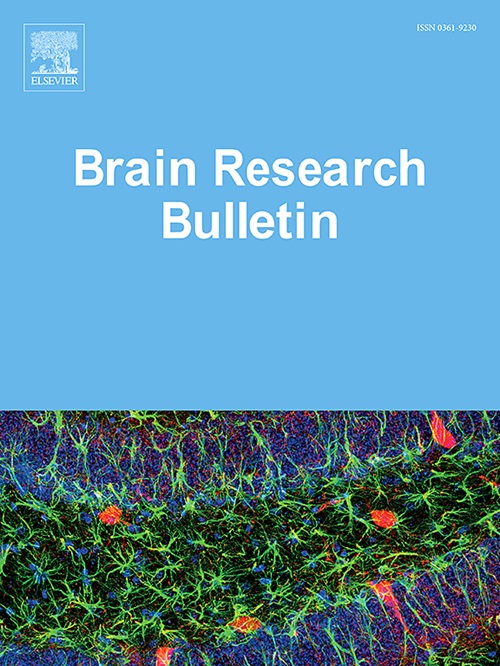Glycine alters the sequential pattern of swallowing activity in juvenile rat working heart–brainstem preparations
IF 3.7
3区 医学
Q2 NEUROSCIENCES
引用次数: 0
Abstract
Swallowing is a centrally programmed intricate activity modulated by both excitatory and inhibitory neural transmissions to ensure that aspiration does not occur. However, the role of inhibitory transmission in swallowing is not clearly understood. The working heart–brainstem preparation (WHBP) has recently gained attention as a tool for studying the central mechanisms of swallowing. Nevertheless, the swallowing activity elicited from the WHBP has not been adequately validated. Therefore, we aimed to confirm whether the neuronal activity elicited from the WHBP represented authentic swallowing activity and to investigate the roles of inhibitory neurotransmitter receptors in the development of sequential swallowing. By applying electrical stimulation to the superior laryngeal nerve of the WHBP, sequential muscle activity was recorded from multiple muscles, from the oral cavity toward the oesophagus. This activity transported the staining solution administered through the oral cavity to the lower end of the oesophagus, confirming the activity elicited from the WHBP as swallowing activity. Additionally, we found that administering a glycine receptor antagonist accelerated the timing of activation of the middle pharyngeal constrictor muscle during sequential swallowing activity, whereas the administration of a GABAA receptor antagonist had no effect. In conclusion, we validated that the WHBP elicits swallowing activity upon electrical stimulation of the superior laryngeal nerve, and that glycine receptors contribute to the orchestration of the sequential swallowing activity.
甘氨酸改变幼鼠心-脑干制剂中吞咽活动的顺序模式
吞咽是一个复杂的中枢程序活动,由兴奋性和抑制性神经传递调节,以确保不发生吞咽。然而,抑制传递在吞咽中的作用尚不清楚。工作心脑干准备(WHBP)作为研究吞咽中枢机制的工具近年来受到关注。然而,WHBP引起的吞咽活动尚未得到充分验证。因此,我们的目的是确认WHBP引发的神经元活动是否代表真实的吞咽活动,并研究抑制性神经递质受体在序贯吞咽发展中的作用。通过对腰bp的喉上神经进行电刺激,记录了从口腔到食道的多个肌肉的连续肌肉活动。这种活性将给药的染色溶液通过口腔输送到食道的下端,证实了WHBP引起的活动是吞咽活动。此外,我们发现在连续吞咽活动中,使用甘氨酸受体拮抗剂可以加速咽中收缩肌的激活时间,而使用GABAA受体拮抗剂则没有效果。综上所述,我们证实了WHBP在喉上神经的电刺激下引起吞咽活动,甘氨酸受体参与了顺序吞咽活动的协调。
本文章由计算机程序翻译,如有差异,请以英文原文为准。
求助全文
约1分钟内获得全文
求助全文
来源期刊

Brain Research Bulletin
医学-神经科学
CiteScore
6.90
自引率
2.60%
发文量
253
审稿时长
67 days
期刊介绍:
The Brain Research Bulletin (BRB) aims to publish novel work that advances our knowledge of molecular and cellular mechanisms that underlie neural network properties associated with behavior, cognition and other brain functions during neurodevelopment and in the adult. Although clinical research is out of the Journal''s scope, the BRB also aims to publish translation research that provides insight into biological mechanisms and processes associated with neurodegeneration mechanisms, neurological diseases and neuropsychiatric disorders. The Journal is especially interested in research using novel methodologies, such as optogenetics, multielectrode array recordings and life imaging in wild-type and genetically-modified animal models, with the goal to advance our understanding of how neurons, glia and networks function in vivo.
 求助内容:
求助内容: 应助结果提醒方式:
应助结果提醒方式:


